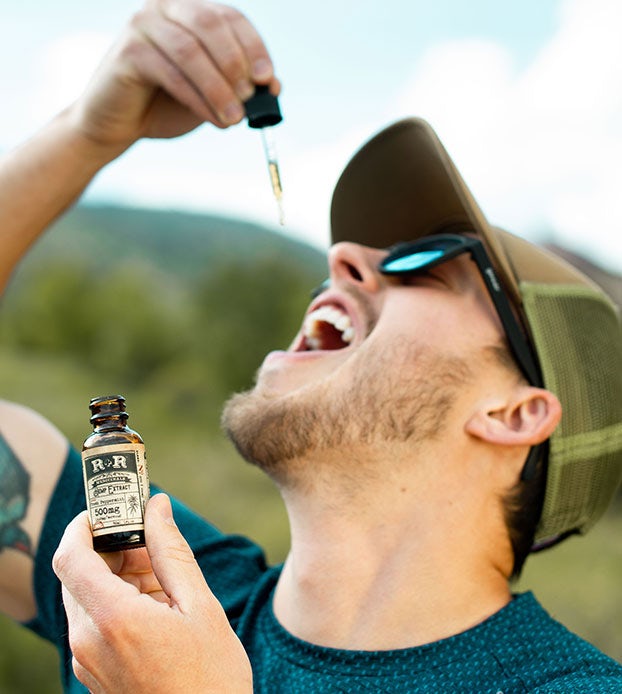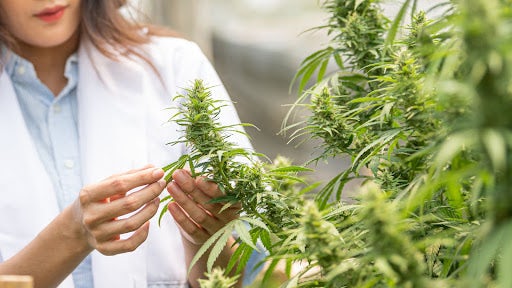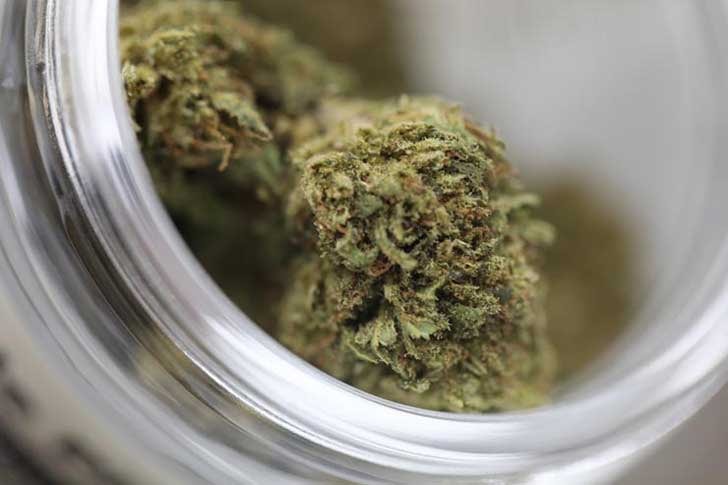Every cannabis consumer is familiar with the munchies, but have you ever heard of the reverse munchies? The combination of minor cannabinoids THCV and CBG could help reduce bad eating habits like snacking and late-night binge eating, according to real-world data (RWD) collected from Cannigma readers last month.
The data was gathered during a 4-week engagement in collaboration with MoreBetter, during which time a total of 95 participants tried Slumber’s Weight Drops, and reported back daily on their experiences. The specially-formulated tincture contains 15mg of THCV and 15mg of CBG in each dose, and isn’t designed to get you high, but rather to enhance your day-to-day mood and behaviors.
With scant clinical research on both THCV and CBG, and especially the two cannabinoids together, this data can help to shine a light on effects, side effects and dosing – especially as it was gathered over the period of a month, rather than a single snapshot. And indeed – over the three-week product trial period, participants saw increasingly positive results, including a decrease in appetite, more control over cravings, and a noticeable boost in appetite and energy. And they seemed to like it, too.
Slumber’s THCV+CBG tincture helps control snacking and binge eating
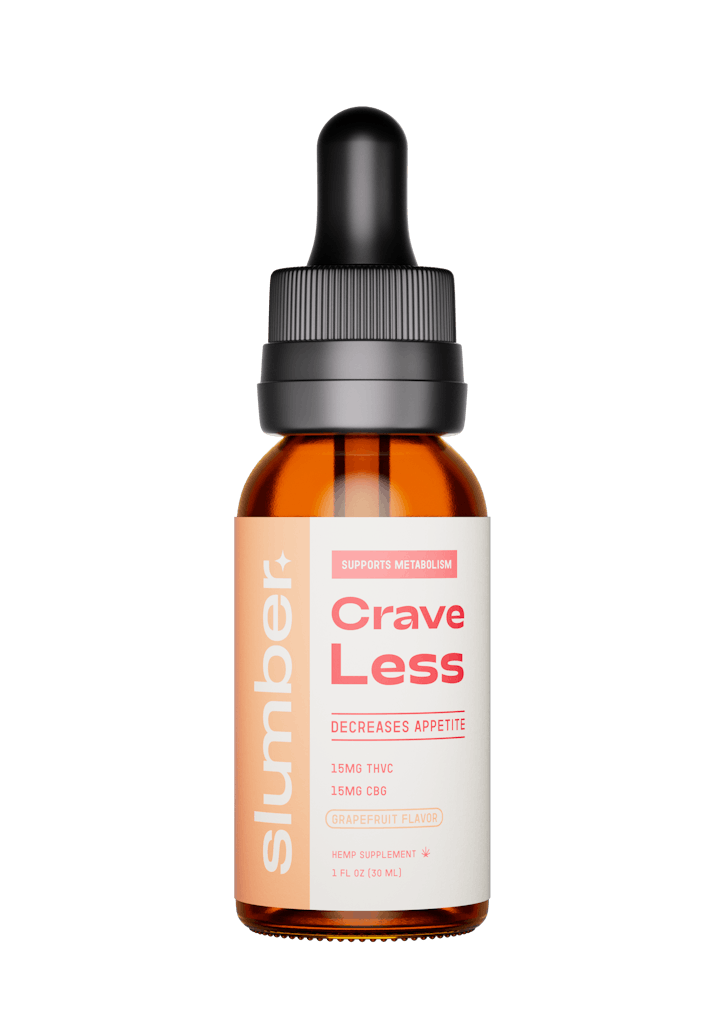
Bad eating habits are rampant among developed nations. Mindless eating, binging at night, boredom snacking, overeating, emotional eating, and difficulty with portion control. When asked about their worst eating habit during the onboarding week (before trying the product), these were the most-cited issues that participants were looking to combat.
Excitingly for the participants, they reported a statistically significant change in the severity and frequency of their worst habit during the product trial. Statistical significance means that this observed effect is likely to be genuine, and not just due to random chance.
In terms of the severity of the eating habit – or the impulse to engage in the bad habit itself – participants reported an average drop of 28%. Or put more simply, before using the product the average craving severity was “high,” and after trying it for 3 weeks, it was “low.”
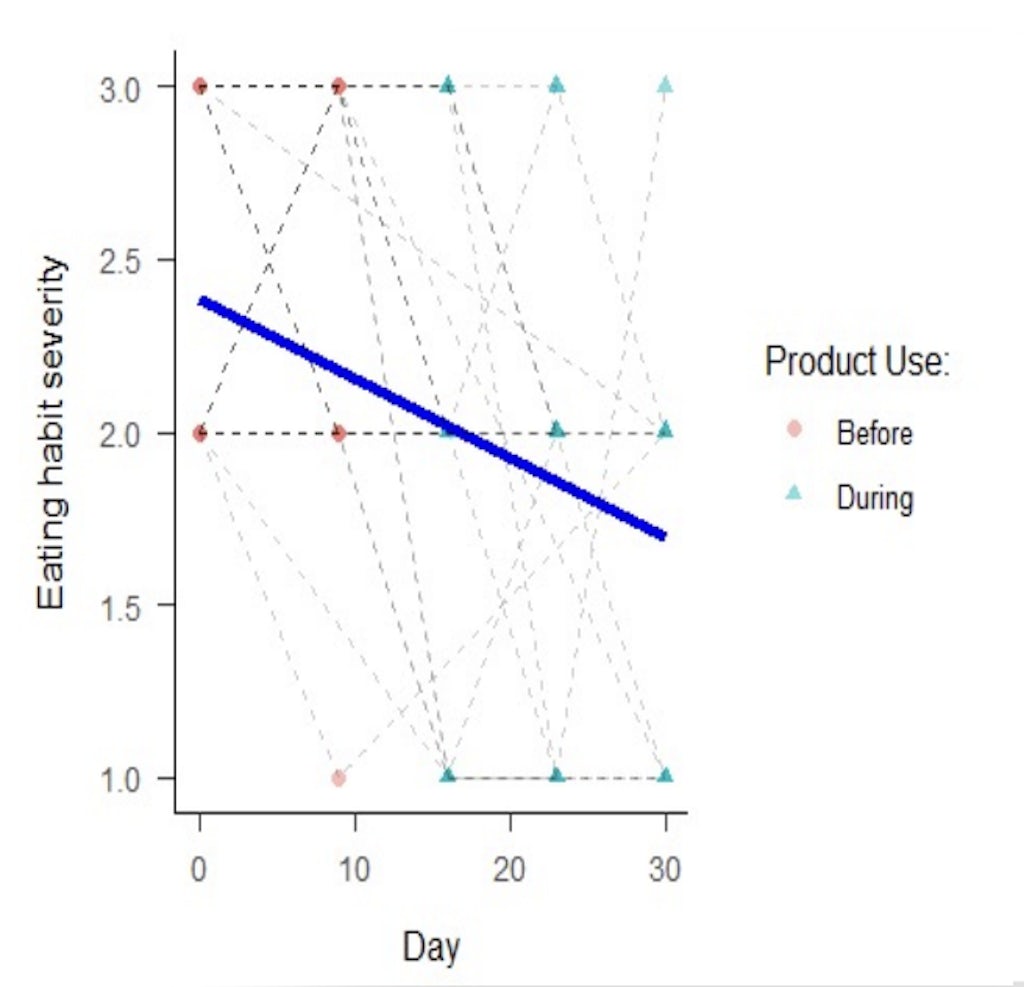
While there is some subjectivity to the data in that we’re relying on self-assessment and reporting, it stands to reason that if your worst eating habit is less intense and less frequent, controlling it will be significantly easier.
Zooming out from bad habits to appetite specifically, significant improvements could also be seen. When asked about appetite levels on a scale of 0-10, there was an average decrease of 2.7 points, from 6.24 during the intake period to 3.54 after three weeks of using the Weight Drops – a whopping 43% reduction in reported appetite.
Participants also were assessed on a validated measurement scale of food cravings, known as the Power of Food Scale (PFS), which measures appetite motivation and desire. Participants who completed the study saw, on average, a 17% decrease in their PFS.
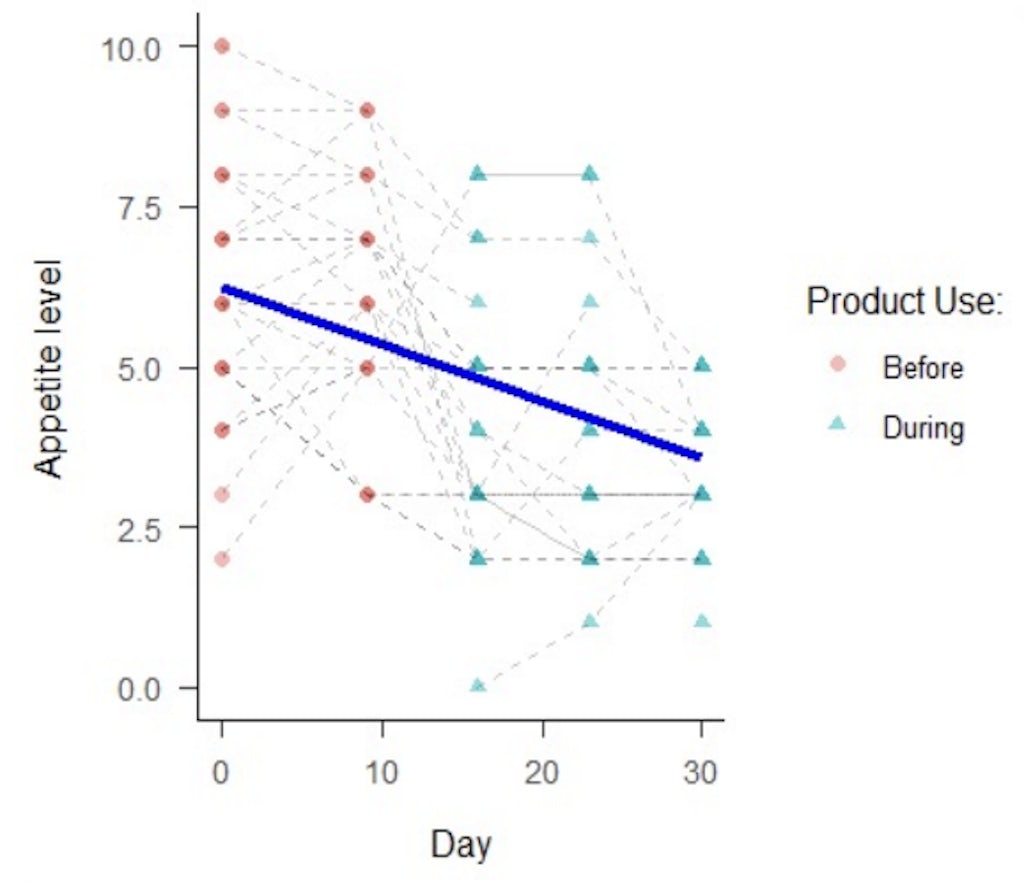
But the decrease in appetite is not just seen in the data – it’s also part of the lived experience. “After taking the Slumber Weight Drops THCV Tincture I noticed after a few days I started craving less food, and when I did eat it was a lot less, and I didn’t crave sweet as often,” one participant shared at the end of the study. “I felt less appetite and hunger or urge to eat while using the drops,” another participant mentioned.
The relationship between energy and overeating
This is one of the cool things about data analysis. In this effort, we set out to find out if the THCV+CBG tincture was effective in helping people control their appetite, presumably for the purpose of weight loss. And indeed – as we saw above – the results were resoundingly positive.
What we didn’t necessarily expect to find were similarly impressive results on measures of energy and focus. But here’s the thing – it actually makes perfect sense if you think about it. If you’re feeling tired and distracted, you’re far more likely to reach for that 3pm snack that you hope will perk you up (even if it actually leaves you feeling even more lethargic). Conversely, if you’re focused and filled with energy, you’re more likely to get absorbed in what you’re doing – whether it’s work or leisure – and eat only when you’re truly hungry.
Throughout the engagement, participants were asked to rate their appetite, energy, and focus levels, among a variety of other questions. There was a statistically significant increase in reported energy levels over four weeks (31%), along with focus (26%). And of course, if you’re more focused and energized you’re probably less stressed – an assumption that was also corroborated by the dataset. Participants reported increasingly lower levels of stress the longer they took the Weight Drops, with an average decrease in stress of 50% by the end of the data collection period. Cutting stress in half? Yes, please.

“I found this the most helpful with controlling stress eating since it helped me feel more at peace and calm during the day,” one participant said at the end of the study.” I was less anxious so thought about food much less. That helped me more thoughtful about when and what I ate.”
Another user added, “I ate less while taking the drops and had more energy than any other weight loss things I’ve tried. Diet or pills, this tincture made me feel best while eating less more than any other thing I’ve tried. Weed gives me munchies, but this didn’t.”
Can real-world data teach us about THCV and CBG dosing?
Beyond learning about effects and benefits, there’s a lot we can learn about product consumption from analyzing consumer data. For example, the data showed that most participants used a full dropper (15mg of THCV and 15mg of CBG) of the Weight Drops and dosed one or two times a day (average of 1.25 doses per day). The majority of participants took their Weight Drops in the morning between 8am and 11am, which makes sense if they found it to improve energy levels.
The positive experiences reported by participants in the study likely indicate that this dose is appropriate for most consumers – and if you’re trying it for yourself you can adjust according to your needs. As one participant said, “I took a few days to figure out the right dosage that worked best for me. Once I did it seemed to help control my appetite.” Another participant added, “This really helped curb my appetite throughout the day. I took one dropper in the am and one more if needed in the afternoon.”
THCV+CBG: More energy, less stress, better eating habits
While there’s not a lot of research on either THCV or CBG, we do have some hints from the existing body of literature, which seem to be aligned with the findings of the Slumber study.
Not to be confused with THC, THCV (tetrahydrocannabivarin) is sometimes called “the sports car of cannabis,” and usually produces a relaxing, euphoric, energizing effect. Pharmacologically, THCV is chemically very similar to THC, and able to produce similar but different effects thanks to its slightly shorter carbon tail. Along with a clearer-minded experience, THCV is also much less likely than THC to give you the munchies, put you to sleep, or leave you sitting on the couch feeling stoney-eyed. 1 2 3
CBG (cannabigerol), for its part, has been dubbed “the mother of all cannabinoids,” as all other cannabinoids are derivatives of its acid form, CBGA. On CBG there’s also very little human evidence, but the initial data seems to tell us that it has a focused, calming effect. In fact, pharmacology studies show that CBG activates the alpha-2-adrenoceptor of the body’s fight-or-flight system, similar to certain approved ADHD medications. Unlike THC and more like THCV, CBG is much less likely to make you feel anxious, sleepy, or hungry. 4 5
Back to the Slumber data. At the end of three weeks using the tincture, 52 participants had completed the full trial and were asked if they agreed with a series of statements – and these turned out to be some of the most compelling results in the report:
- 90% – I had less episodes of overeating while using the tincture
- 77% – the tincture was effective at decreasing my appetite
- 60% – my level of focus is better throughout the day after using the tincture
- 60% – Slumber’s Weight Drops improved my overall quality of life
Combining the clinical evidence with the real-world data, we’re starting to see a strong case that the combination of THCV and CBG may help people feel better, get into better eating habits and ultimately lead a healthier lifestyle.
Sources
- Wargent, E. T., Zaibi, M. S., Silvestri, C., Hislop, D. C., Stocker, C. J., Stott, C. G., Guy, G. W., Duncan, M., Di Marzo, V., & Cawthorne, M. A. (2013). The cannabinoid Δ(9)-tetrahydrocannabivarin (THCV) ameliorates insulin sensitivity in two mouse models of obesity. Nutrition & diabetes, 3(5), e68. https://doi.org/10.1038/nutd.2013.9
- Englund, A., Atakan, Z., Kralj, A., Tunstall, N., Murray, R., & Morrison, P. (2016). The effect of five day dosing with THCV on THC-induced cognitive, psychological and physiological effects in healthy male human volunteers: A placebo-controlled, double-blind, crossover pilot trial. Journal of psychopharmacology (Oxford, England), 30(2), 140–151. https://doi.org/10.1177/0269881115615104
- Abioye, A., Ayodele, O., Marinkovic, A., Patidar, R., Akinwekomi, A., & Sanyaolu, A. (2020). Δ9-Tetrahydrocannabivarin (THCV): a commentary on potential therapeutic benefit for the management of obesity and diabetes. Journal of cannabis research, 2(1), 6. https://doi.org/10.1186/s42238-020-0016-7
- Cascio, M. G., Gauson, L. A., Stevenson, L. A., Ross, R. A., & Pertwee, R. G. (2010). Evidence that the plant cannabinoid cannabigerol is a highly potent alpha2-adrenoceptor agonist and moderately potent 5HT1A receptor antagonist. British journal of pharmacology, 159(1), 129–141. https://doi.org/10.1111/j.1476-5381.2009.00515.x
- Russo E. B. (2011). Taming THC: potential cannabis synergy and phytocannabinoid-terpenoid entourage effects. British journal of pharmacology, 163(7), 1344–1364. https://doi.org/10.1111/j.1476-5381.2011.01238.x
Sign up for bi-weekly updates, packed full of cannabis education, recipes, and tips. Your inbox will love it.

 Shop
Shop Support
Support

